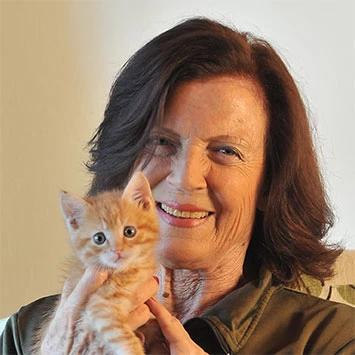Doing Without Doing in Yoga Practice – Dona Holleman on the Ancient Practice of Wu Wei

Most people practice yoga asanas from the point of view of the physical body, as a purely physical exercise, writes renowned yoga teacher Dona Holleman in this article. This is called doing. Dona shares another way of approaching our practice – doing without doing – based on the ancient Taoist practice Wei-wu-wei. Applied to the practice of yoga, this means that the attention is focused on the inner energy body more than on the outer physical body.
In 50 years of studying, practicing and teaching yoga I have developed a way of working with the body, the breath and the mind, which is at once simple and sophisticated. After having been exposed to so many religions and philosophies, with their myriad rules and regulations, I finally condensed both the technique of yoga as well as my personal philosophy down to the simple Taoist practice of wei-wu-wei, or doing-without-doing.
This is the technique where, according to Taoist practices, one acts like water, flowing with the stream instead of fighting it, to obtain results. In Greek philosophy pantha rhei means everything is in flux. As human beings the art is to go with the flow, not to offer resistance but to move with the forces that move us. Fighting the forces, the body and the mind, to obtain results is called doing. This is the way most people spend their lives, and in this there is a lot of friction and loss of energy.
Not-doing or wu-wei is to move fluidly with the forces, the body and the mind, not fighting our way through things. For this, the mind and body have to be in a state of quiescence in order to reflect without distortion the here and now. Patanjali states that the mind should be colorless like a crystal that reflects whatever object it is put on.
The Greeks said: gnoti seauton, or “Know yourself.” This self-knowledge is the self-reflection of the mind and the body, emptied of all thought and actions. Then the mind and body are in direct contact with the here and now in which the observer, the observed and the act of observation are one (the core of both Patanjali’s and Krishnamurti’s teaching).
Once the body and mind are made quiet through self-reflection, one can stay in this state for a while, or one can move back into acting. Projecting an act, a wish or intent in this state of mental and physical quiescence has extraordinary power to self-fulfill, as there are no thoughts, actions and emotions to interfere with it. This is called jan-zu, or the act-that-does-itself, and has been amply described in such classics as Zen in the Art of Archery by Herrigel.
Wu-Wei or Not-Doing in the Art of Yoga
As far as yoga is concerned, most students practice the asanas from the point of view of the physical body, as a purely physical exercise. This is called doing. Wu-wei or not-doing applied to the practice of yoga means that the attention is focused on the inner energy body more than on the outer physical body. Though the classical Hatha yoga asanas are performed with great mental and physical precision, they are at the same time integrated with a specific kind of breathing which forms the bridge between the outer physical body and the inner energy body.
Aligning each posture on the force of gravity with its inherent rebound effect, which renders the body light and fluid, this breathing is guided to fill the inner energy body and to make it strong, resilient and vital. Thus, there is an enhanced capacity for recuperation from the negative influences of daily life. At the same time, the daily wear and tear on the body is minimized, as the body does not move from a mere muscular point of view, but rather from the vitality of the inner energy body. Moving the body from the inner energy body is called doing-without-doing, in which the postures flow like water (the-act-that-does-itself). This technique is well known in the Far East, and the years spent in Indonesia, where dancing in this way is natural, have undoubtedly contributed to developing this concept in the art of yoga.
More yoga teacher resources from Dona Holleman, Balancing Inner and Outer : Iyengar Teacher Dona Holleman on the Benefits of Centered Yoga.
Strengthen and find balance in your yoga practice with this YogaUOnline Course from Judith Hanson Lasater: Embodying Spirit, Deepening Your Practice On and Off the Mat.
Printed with permission from donaholleman.com and centeredyogadonaholleman.org

With more than 50 years of study and teaching, Dona Holleman is one of the most respected senior practitioners and teachers in the world today. Her studies include not only yoga, but also many other subjects, which have helped her form a wider view of yoga. Dona’s early years included exposure to Buddhism, Roman Catholicism, Quakerism and Taoism.
Dona became a student of J. Krishnamurti in the 1950s. At the same time, Dona also encountered yoga, which became immediately her main path for the practice and expression of the body. She met B.K.S. Iyengar in the mid-1960s, and became a committed student of his, founding Iyengar schools in the Netherlands and in Italy.
She resides and teaches currently at the Epona Studio in Soiano del Lago, Northern Italy. Dona brings to her teaching her own unique synthesis of yoga and philosophy, which has grown out of her practice and experiences. Dona is the author of several books, amongst other the best selling Dancing the Body of Light, Eyes of Innocence, Centering Down and The Centered Yoga Manual, currently all out of print. She also made a movie, called A Fish in Search of Water. Recently she brought out the book Dancing the Flame of Life, available from Amazon and Yogamatters.



